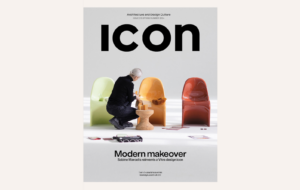

Words Beatrice Galilee
This year’s Oslo Architecture Triennale was something like an exercise in self-help for Norwegian architects. Entitled Culture of Risk, it highlighted the chasm between the country’s extraordinary engineering feats – in the bridges and oil-mining infrastructure that has driven Norway’s wealth since the mid-1970s – and architecture that has failed to dazzle.
This confession of dissatisfaction was a cathartic release for a country that excels in almost everything it does: it is the home of the Nobel prize, and boasts one of the highest standards of living in the world and an impeccable social-democratic welfare state. Yet despite this stability it evidently suffers from bouts of self-doubt.
A new generation is concerned with recognising and solving its own forms of complacency. The triennale was curated by Gary Bates, director of Oslo-based Space Group, which is working with OMA on the Vestbanen masterplan for the regeneration of a former railway station in central Oslo. Bates commissioned other young practices working in the city – Fantastic Norway, Jarmund Vigsnæs, Malarchitecture – to respond to the idea of risk. Issues included the depleting resources of small fishing villages, the cluttering of mountain landscape with cheap, peculiar huts for thousands of tourists and even the invasion of the Costa del Sol by Norwegians. A rather sweet, utopian idea claimed that if Norway invested 98 per cent of its oil wealth, global warming could be prevented.
What came across from many of the designs on show was an urge amoung young Norwegian architects to react, rebel and move on from safe timber constructions. The tension between the new and old guard was visible, not least because the now-established collective Snøhetta came second to Copenhagen-based Julien De Smedt in the competition to design a ski jump for the centre of the city. De Smedt’s light-filled, elegant structure won the unanimous vote of the jury and his show was the most popular attraction at the exhibition.
It was also good to see student work exhibited in the same space, with projects exploring different modes of urbanity in Nordic cities under a huge banner bearing the words “Delirious Oslo”, a play on the title of Rem Koolhaas’ 1978 book about New York.
The conference itself was coherent, concise, thoughtful and well attended. It covered five angles of risk: social, political, economic, technological and communications. With guests including graphics agency 2×4, structural engineer Cecil Balmond and Russian architect Alexander Brodsky (see our interview in this issue), it was a rich programme for a single day.
The success of the event was undoubtedly due to the coherence of the topic. Typically, any such events outside of Venice are overambitious and under-budgeted affairs attended mainly by students and addressed by speakers who are unprepared to talk about anything other than themselves. But here, instead of discussing the future of cities, sustainable architecture or Dubai, the conference was specifically focused on issues surrounding Norwegian architecture. Future biennales, triennales and architecture festivals may do well to take note.
Oslo Triennale 2007: Culture of Risk, 27 September – 5 October




















